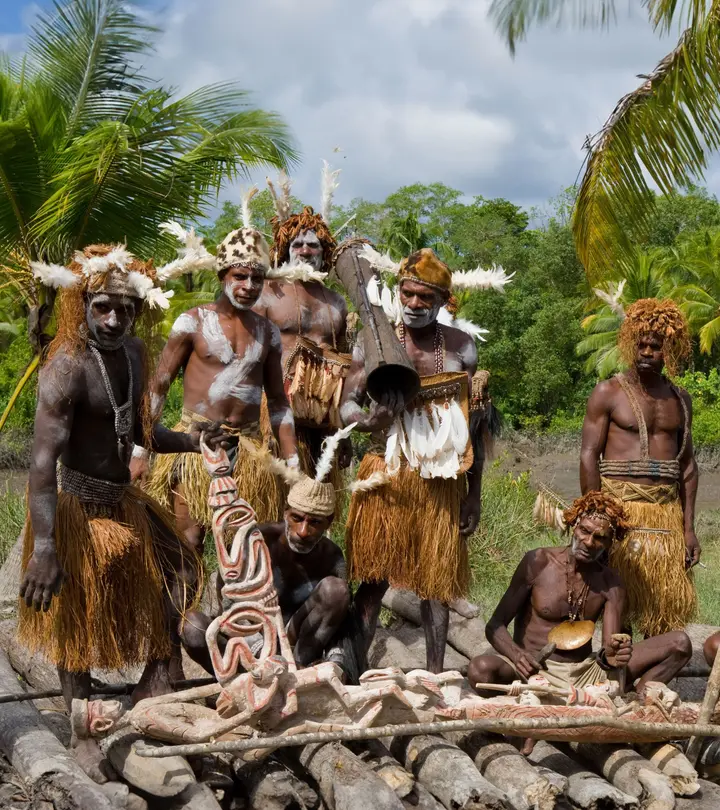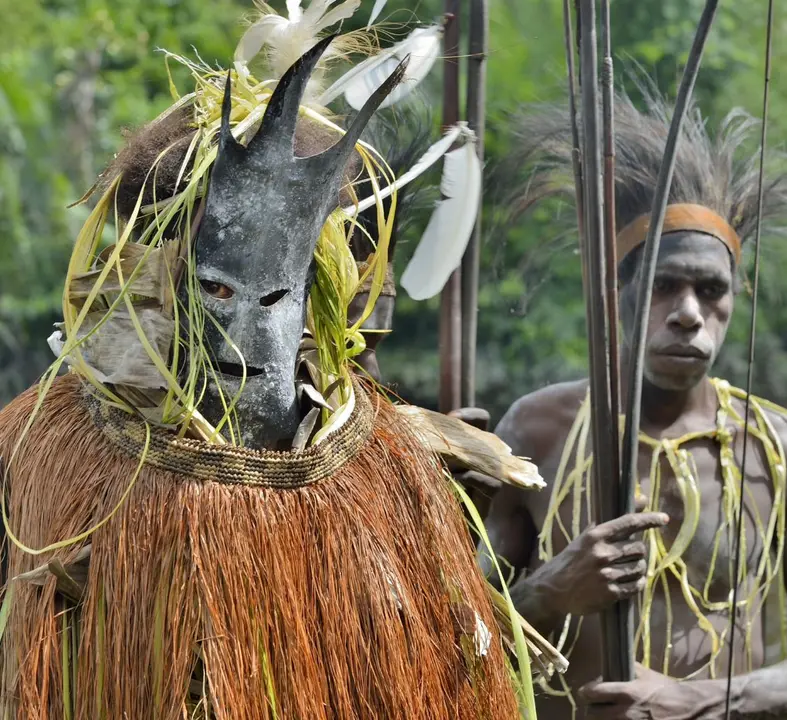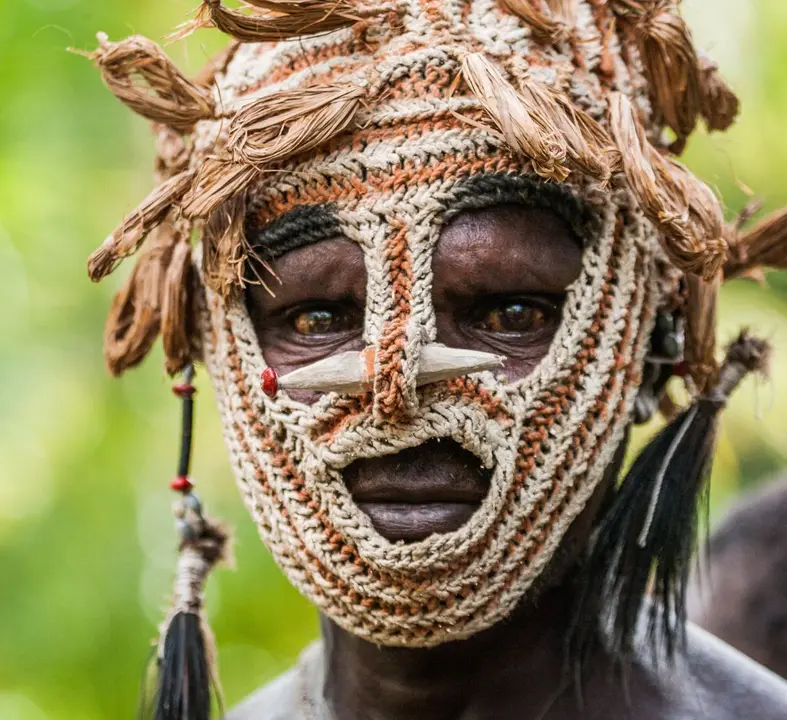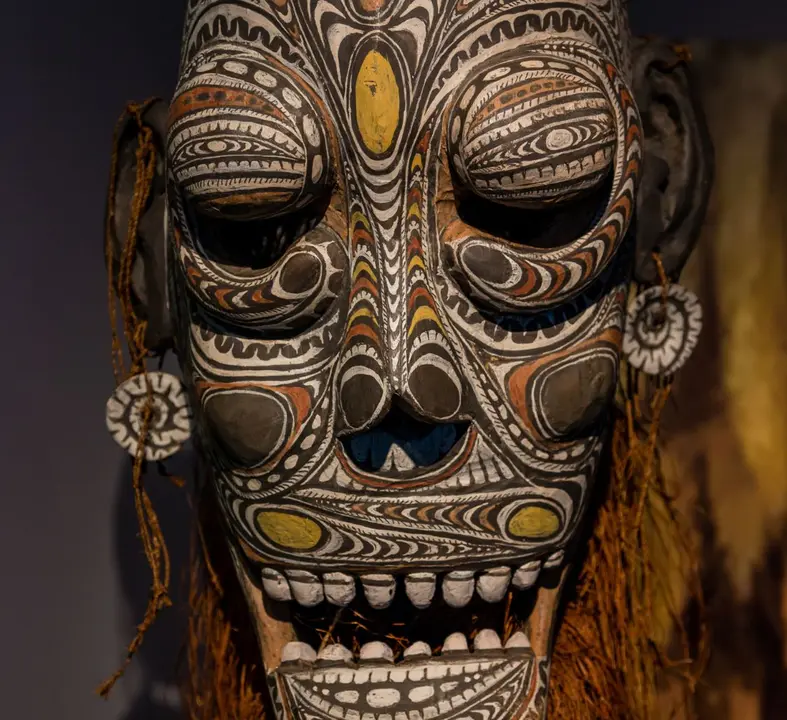
The Ancient Traditions and Rituals of the Asmat People
21 January 2025 | East Indonesia, Heritage & Culture
Nestled deep in the verdant and remote jungles of West Papua, the Asmat people have a rich cultural heritage that is deeply intertwined with their traditional and spiritual practices. Their customs – from esoteric rituals to intricate wood carving practices – are an essential part of their identity that has survived the test of time. Having the rare opportunity to witness these customs presents an insight to the Asmat people’s connection to their ancestors, their beliefs, and their land. Read on to have a peek at this indigenous tribe’s ancient traditions.





The Significance of Tribal Rituals to the Asmat People
For the Asmat people, rituals and ceremonies serve as the backbone and glue of their communities – reaffirming their bonds, and reinforcing their values and beliefs that hold the group together. Rituals are woven into the fabric of their daily lives, with the tribe coming together to honor their ancestors, appease the dead, and to invoke spiritual protection, amongst other reasons.
The tribe’s connection to their ancestors is crucial, especially in pre-Christian times as they believe that the spirits of the deceased have the power to influence the living, lingering behind in the world of the living and potentially causing disharmony. Therefore, honoring these spirits is paramount to maintaining balance within their society, requiring rituals to be performed so that they may rest in peace. The importance of these ceremonies is reflected in their elaborate preparations, often including the creation of ceremonial items like masks, poles, and shields.
The Spirit Mask Ritual
The Spirit Mask ritual is one of the most profound and visually striking ceremonies in Asmat culture. It is conducted every few years to commemorate the passage of the deceased from the realm of the living to the spirit world, ensuring their spirits are guided to Safan, the land of the dead. This sacred ceremony is a time-intensive event, lasting several months and involving extensive preparation.
The ritual takes place in a designated men’s house, known as a "jeu," and is a cornerstone of community life in the Asmat villages, such as Biwar Laut. Preparation begins with the crafting of the masks and costumes – a process that spans four to five months and uses a wide array of materials, such as rattan, wood, and sago shoots. These costumes are also adorned with parrot and cassowary feathers, and dyed using natural pigments like red ochre and charcoal.
During the ceremony, chosen individuals don the costumes, embodying the spirits of their specific ancestors. These representatives take on the rights and responsibilities of the deceased, including caring for their orphaned children. They would then travel from house to house, interacting with the families while receiving food and other essential items for their journey to the Safan.
As night falls, the dancers perform within the jeu, their movements mimicking cassowary birds, accompanied by songs and drumbeats. When day breaks, a symbolic confrontation takes place between the villagers and the dancers, wherein the villagers "attack" the dancers, driving them back into the forest, symbolizing the spirits’ departure to the afterlife. The costumes are then left to decay naturally in the forest, marking the end of the ceremony.

The Mbis Pole Ritual
The Asmat honor their dead through intricate feasts and rituals, prominently featuring the creation and use of towering Mbis, also known as Bis, or Bisj, poles. These funeral poles, carved from a single mangrove tree, serve both as commemorations of the deceased and as reminders for the living to avenge their deaths. Having been a headhunting society, the Asmat believe that the demise of one of their community members is always caused by an enemy, either through sorcery or through headhunting raids. Such losses disrupt their societal and spiritual balance, necessitating rituals to restore harmony and appease the fallen.
After an especially deadly raid, a Bis ceremony is held. This involves a series of feasts held over months, during which the poles are prominently displayed in front of the men's house. Ritual activities include mock battles between men and women, symbolizing the struggle to achieve balance. Once a successful headhunting mission is completed, the Mbis poles are abandoned in sago palm groves. As they decay, their supernatural power is believed to nourish the earth, ensuring the fertility of sago trees and the sustenance of the community.
Mbis poles are striking examples of Asmat artistry and spiritual expression. Carved from wood, the poles incorporate stacked ancestor figures and a wing-like projection representing fertility and power. Additionally, canoe-shaped bases metaphorically represent the vessels that carry spirits to the afterlife, while also referencing the canoes that the Asmat people rely on daily.
Wood Carving: The Heart of Asmat Artistry
Wood carving is a revered tradition among the Asmat people. Carvers, known as wowipits, enjoy a high status in the community and trace their artistic lineage to the cultural hero Fumeripits – believed to be the progenitor of mankind and its first wood carver. Every wowipit continues Fumeripits’ legacy, embodying the Asmat belief in the profound connection between humans and trees, recognizing wood as the essence of life.
Today, the Asmat maintain a vibrant tradition of carving ancestral figures from wood. These sculptures, often displayed in the men’s ceremonial house, commemorate deceased ancestors. Although they represent specific individuals, their features are generalized, reflecting the collective spirit of the community. A common pose for these figures is the "elbows-to-knees" position, symbolizing the universal human posture at birth and death.
The influence of ancestral imagery extends to functional items like war shields. These shields, carved with intricate designs, served dual purposes: practical protection in battle and spiritual safeguarding through the power of the ancestors. The motifs on these shields, whether figural or abstract, vary by region and imbue the shields with strength and vitality.

Woodcarving remains a cornerstone of Asmat culture, showcasing their artistry and spiritual depth. It is through these carvings and rituals that the Asmat people continue to preserve their heritage and culture to the modern day.








